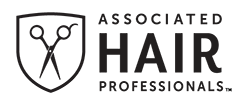On June 4, 2021, Governor Sisolak signed Senate Bill No. 291 (SB 291) into law, creating licensure
for advanced estheticians and advanced esthetician instructors. The bill outlines definitions, training curriculum, and qualifications for licensure. SB 291 became effective January 1, 2022. ASCP has summarized the bill and how it impacts your profession below.
One issue with SB 291 is that previously unregulated services are now regulated. So, some procedures that professionals have been performing for years may now fall under the scope of an advanced esthetician and will require an advanced esthetics license to continue to perform these procedures.
Many licensed estheticians may obtain a legacy license, also known as a “grandfather license,” for advanced esthetics. These individuals need to submit proof of:
- A 75-hour laser course, or
- 150 hours of experience operating lasers for medical or esthetic purposes under the supervision of a health-care professional.
Experience as an operator requires a notarized affidavit from the supervising medical professional. Once the individual has completed the 75-hour course or received the notarized affidavit, the Nevada State Board of Cosmetology (Board) must review and approve the training. Finally, an application for the advanced esthetic license must be submitted to the Board. ASCP is currently working with the Board to create other, less cumbersome avenues to earn a legacy license.
Advanced esthetics
SB 291 defines advanced esthetics, who performs the practice, and what procedures are performed with the license.
Advanced esthetics is the practice of advanced esthetic procedures in addition to the practice of esthetics.
Advanced esthetician is an individual who engages in the practice of advanced esthetics.
Advanced esthetic procedure is any of the following procedures performed for esthetic purposes and not for the treatment of a medical, physical, or mental ailment:
- Exfoliation
- Microdermabrasion
- Microneedling
- Dermaplaning
- Extraction
- Hydrotherapy
- A nonablative esthetic medical procedure
- Other similar esthetic preparations or procedures with the use of the hands or a mechanical or electronic apparatus
For definitions of each procedure, view page 5 of the linked document.
Advanced esthetics curriculum
The Board will adopt rules outlining curriculum pertaining to the practice of advanced esthetics for licensed schools of cosmetology. The curriculum must include instruction on the following subjects:
- State and federal laws
- Professional ethics and standards
- Theory and performance of advanced esthetic procedures
- Medical subjects, such as those relating to health, lifestyle, nutrition, autoimmune diseases, infection control, and wound healing
- First aid and CPR
- Skin types, and systems for classifying skin conditions, skin disorders, and diseases
- Anatomy, physiology, chemistry, and pharmacology
- Physics of wave energy, lasers, intense pulsed light, radio frequency, ultrasound, and plasma
- Client confidentiality, consultations, informed consent, and client care pre- and post-advanced esthetic procedures
- Liability insurance, risk management, and interaction with health-care professionals
- Esthetic medical devices and other apparatuses
Advanced esthetics examination
Those who are 18 years old, are of good moral character, have completed 10th grade, and meet one of the following requirements can apply to the Board to take the advanced esthetics exam:
- The person has completed at least 900 hours of training in a licensed school of cosmetology
- The person is a licensed esthetician and has completed an additional 300 hours of training in a licensed school of cosmetology
- The person has practiced as a full-time licensed advanced esthetician for at least one year
The examination may include:
- Practical demonstrations
- Written and oral tests on:
- Antisepsis, sterilization, and sanitation
- The use of electricity and mechanical apparatuses
- Nevada laws and Board regulations relating to cosmetology
Currently licensed professionals
The scopes of practice of estheticians and cosmetologists were not amended:
NRS 644A.075 “Esthetics” defined.
- “Esthetics” means the practices of:
(a) Beautifying, massaging, cleansing or stimulating the skin of the human body by the use of cosmetic preparations, antiseptics, tonics, lotions or creams, or any device, electrical or otherwise, for the care of the skin;
(b) Applying cosmetics, eyelash extensions or eyelashes to any person, tinting eyelashes and eyebrows, eyelash perming and lightening hair on the body; and
(c) Removing superfluous hair from the body of any person by the use of depilatories, waxing, tweezers or sugaring, but does not include the branches of cosmetology of a cosmetologist, hair designer, shampoo technologist, hair braider, electrologist or nail technologist.
- As used in this section, “depilatories” does not include the practice of threading.
NRS 644A.030 “Cosmetologist” defined.
- “Cosmetologist” means a person who engages in the practices of:
(a) Cleansing, stimulating or massaging the scalp or cleansing or beautifying the hair by the use of cosmetic preparations, antiseptics, tonics, lotions or creams.
(b) Cutting, trimming or shaping the hair.
(c) Arranging, dressing, curling, waving, cleansing, singeing, bleaching, tinting, coloring or straightening the hair of any person with the hands, mechanical or electrical apparatus or appliances, or by other means, or similar work incident to or necessary for [MOU1] the proper carrying on of the practice or occupation provided by the terms of this chapter.
(d) Removing superfluous hair from the surface of the body of any person by the use of depilatories, waxing, tweezers or sugaring, except for the permanent removal of hair with needles.
(e) Manicuring the nails of any person.
